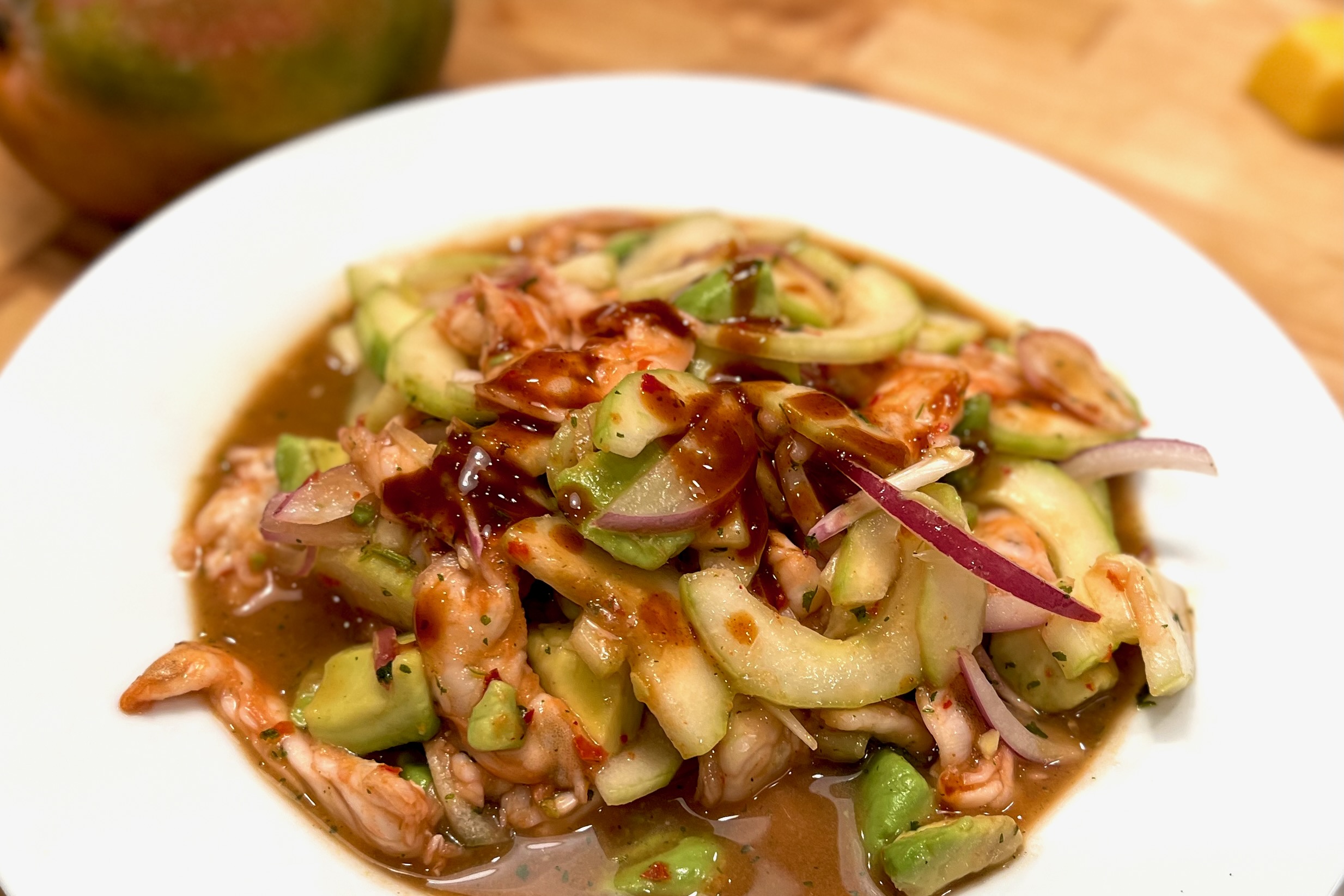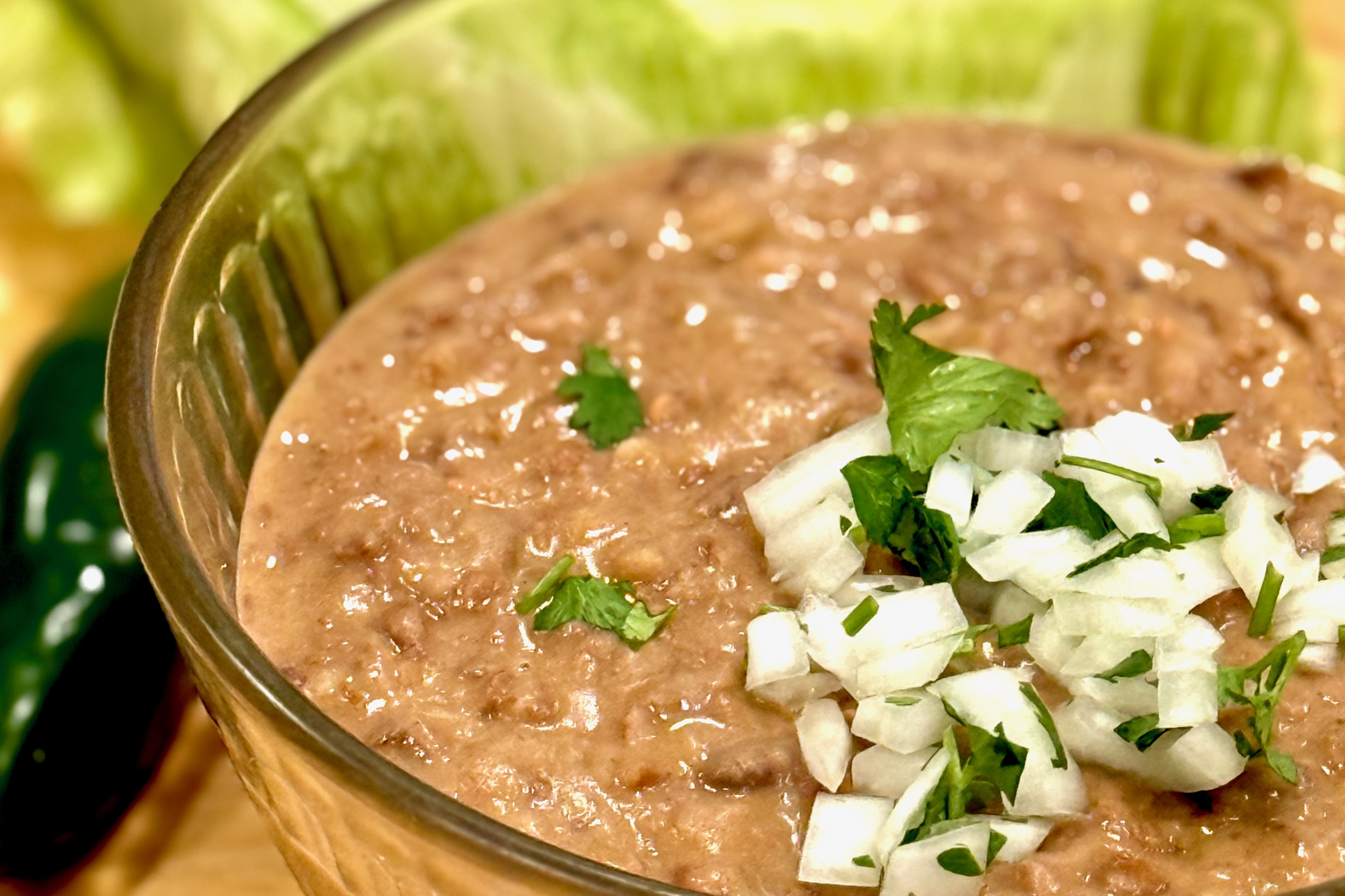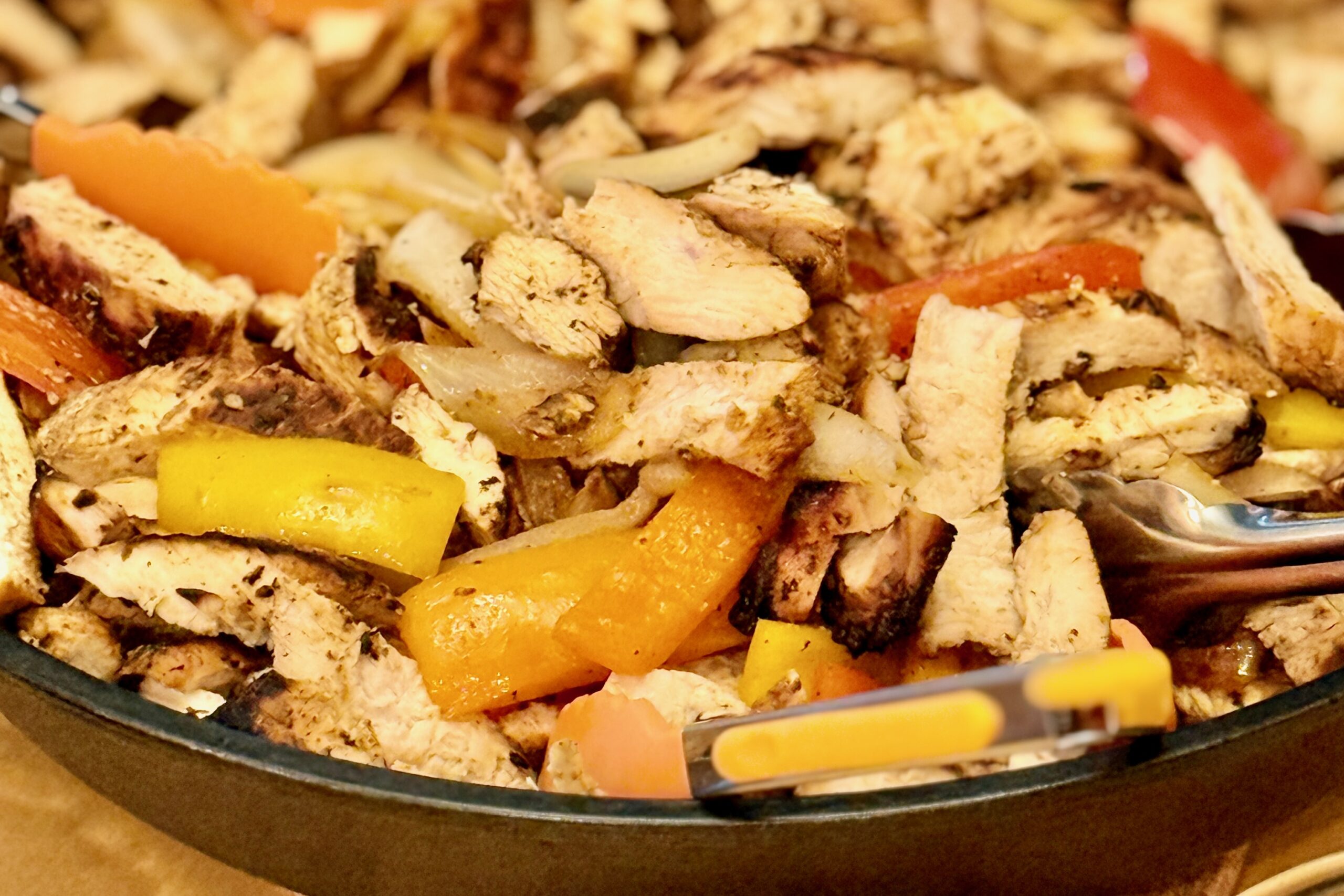This comforting Thai-style soup bridges the gap between Tom Kha Gai and Khao Tom. Like Tom Kha Gai, it features fragrant aromatics—lemongrass, galangal, and kaffir lime leaves—for the signature balance of tangy, savory, and lightly sweet flavors. But instead of a coconut-rich broth, it leans toward the clear, soothing style of Khao Tom, with tender pork (or pork-and-chicken) meatballs and a small scoop of rice added just before serving. The result is a light yet aromatic soup that feels familiar and refreshingly different.
Ingredients
Meatballs:
- ¾ lb (340 g) ground pork
- ¼ lb (115 g) ground chicken (or use all pork)
- 1 tbsp chili-garlic sauce (garlic sambal oelek)
- 1 tsp fresh ginger or galangal, finely grated
- 1 tbsp fish sauce
- 1 tsp white pepper (or black pepper)
- ½ tsp table salt
- 1 tsp cornstarch (optional — improves springy texture)
- 1 tbsp finely chopped cilantro stems or scallion whites (optional)
Soup Base:
- 1 tbsp neutral oil (vegetable, canola, or peanut; or lard)
- 3 large shallots, halved and thinly sliced
- 2 stalks lemongrass, white parts only, bruised and halved
- 3 slices fresh galangal (or 1½ tsp thin-sliced ginger)
- 1 tbsp fresh ginger, grated
- 3 kaffir lime leaves, torn in half
- 3–4 cloves garlic, smashed
- 1–2 small Thai chiles, lightly crushed (optional)
- 6 cups (1.4 L) chicken stock or light broth
- 1 tbsp fish sauce (to taste)
- 1 tsp palm sugar or light brown sugar
- 1–2 tsp soy sauce (optional, for depth)
- ½ cup fresh cilantro, chopped (added at the end)
- juice of 1 lime (1½–2 tbsp, added at the end)
- optional: ¼–½ cup coconut milk, for a lightly creamy finish
- 1 cup cooked jasmine rice, warmed (added to bowl before serving)
Garnishes:
- 1–2 tsp coconut cream from the top of an undisturbed can (optional)
- fresh cilantro leaves
- thinly sliced scallions
- fried shallots or garlic
- soft-, medium-, or hard-boiled eggs, halved
- lime wedges
- thinly sliced red chiles or chile oil (optional)
Directions
Prepare the Meatballs
In a medium bowl, combine pork, chicken, chili-garlic sauce, ginger, fish sauce, white pepper, salt, cornstarch (if using), and cilantro stems or scallion whites. Mix gently until combined but not sticky. Roll into small ¾–1 inch balls.
Build the Aromatic Broth
Heat oil in a large saucepan over medium. Add shallots and sauté until golden. Add lemongrass, galangal, kaffir lime leaves, garlic, and chiles. Stir until fragrant, then add chicken broth. Simmer 15 minutes to infuse.
Cook the Meatballs
Remove lemongrass. Add meatballs and simmer 5–6 minutes until cooked through. Skim any foam.
Season & Finish
Add fish sauce, palm sugar, soy sauce, and cilantro. Adjust seasoning. Remove from heat and stir in lime juice.
Assemble the Bowls
Place ¼–½ cup warm jasmine rice in each bowl. Ladle soup and meatballs over top. Garnish with coconut cream, cilantro, scallions, fried shallots, sliced chiles, and lime.
Notes
Preparation
- Sautéing shallots first adds sweetness and depth.
- Use both galangal and kaffir lime leaves if possible for true Tom Kha flavor.
- For a creamier finish, stir in coconut milk at the end.
- For porridge-like consistency, simmer a small amount of rice in the broth before serving.
Serving Suggestions
- Top generously with fried shallots or garlic.
- Add soft- or medium-boiled eggs for a heartier meal.
- Serve with lime wedges for brightness.
Make-Ahead & Storage
- Meatballs can be formed 24 hours ahead and refrigerated.
- Broth can be made ahead and reheated, adding herbs and lime at the end.
- Stores 2–3 days; keep rice separate to avoid mushiness.





